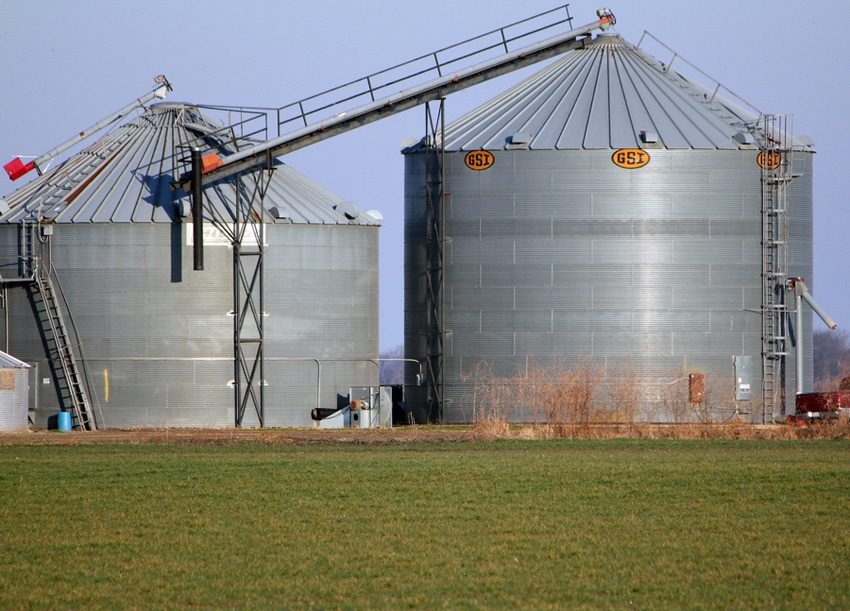February 3, 2015

As a tribute to David Letterman and his popular Top 10 lists, let me present my own Top 10 list — the marketing mistakes farmers make. This comes from a 29-year career as a marketing consultant. (I will save the Top 10 mistakes marketing advisors tend to make for another time). See if any of these apply to you.

Steve Scott
10. Your goal is unrealistic — When asked what you are trying to accomplish with your marketing, you say you want to get “as much as you can.” Your objective is to sell every bushel and every pound at the highest possible price. When prices trade higher after you make a sale, you tend to be disappointed.
Suggestion — Define success. With the help of your banker, your CPA or your significant other, determine a reasonable return on investment or a net per-acre objective. Let that be your target.
9. You work without a plan — You have been told you need to have a marketing plan yet you seldom go to the trouble. In fact, you’re not exactly sure what a marketing plan is.
Suggestion — A marketing plan should at least answer two questions: 1. What price level will likely allow me to cover my anticipated production costs plus meet my profit objective? 2. What marketing strategies do I use to protect this price should I get the chance? There is guesswork involved, but the answers will help focus your approach.
8. You believe the market cares how much it costs you to raise a crop — The markets could care less. It is all about supply and demand and what the trading funds are up to. We have gone entire seasons where prices stayed below most farmers’ costs of production and will likely do so again.
Suggestion — Produce your crops as cost-efficiently as possible, but know the markets will do their own thing.
7. You think the markets “just can’t” trade back to the lows we have seen before — While it is possible for markets to move to higher levels and stay there (see grain prices prior to 1973), you can’t count on it. In 1995, cotton prices traded to $1.15 a pound. Many predicted at the time that cotton prices would trade from 70 cents to a dollar going forward. In the fall of 2001, nearby futures traded to 30 cents, which happened to be the low we saw in 1986.
Suggestion — As far as a higher trading range is concerned, believe it when you see it and even then be skeptical.
6. You are reluctant to sell when prices are falling — Selling into a falling market is emotionally very hard to do. You tell yourself you will sell if prices will just get back to where they were, but you often end up watching prices continually fall.
Suggestion — The trick is to try and figure out if the market is actually “trending” lower or simply trading sideways. That requires a basic understanding of price charts and technical analysis which is not that hard to come by. If you determine the market is technically trending lower, chances are a lot of traders have come to the same conclusion. You are generally better off putting your emotions aside and pulling the trigger.
5. You do not understand all of your marketing alternatives — How can you make a sound decision when you do not know all of your choices? Cash sales, cash sales supported by an options position, various cash market contracts, futures strategies, storage strategies — you generally have several legitimate alternatives to consider. It is important to understand how each works.
Suggestion — It is difficult to pick up this knowledge on your own or by attending the occasional seminar. Consider working with a marketing advisor who is willing to spend time in training, preferably one who is “fee paid.”
4. You think that futures and options are “too complicated” — That is simply not the case. Production tools and strategies can be complicated, but these marketing tools are simply unfamiliar. Once you get past the jargon, the concepts are not difficult to learn. Everyone has to go through the same frustrating learning curve. It just takes time and exposure.
Suggestion — Chances are your neighbor knows less than you think. As in No. 5, consider finding a professional who can help. The knowledge will prove invaluable throughout your career. A word of caution — make sure you learn to limit risk, not generate commissions.
3. You try to use futures or options to generate income — This is a common mistake. Speculating in the markets and managing price risk are two completely different things. Do not confuse the two even if a marketing “expert” suggests it.
Suggestion — When it comes to marketing your crops, futures and options should be used to reduce market risk, not add to it. Make sure you know the difference.
2. You put off making sales decisions — This is often one of the most costly mistakes on the list. You have a very hard time making up your mind when it comes to pulling the sales trigger, which often leads to missed opportunities. Your tendency is to want to “watch” the markets and decide later. This is not a good plan.
Suggestion — Make yourself decide. If you do not want to price at the current level, decide where you do want to price and call in your order. Then, and this is important, try not to change your mind when the market gets close.
1. You believe it is possible to “outguess” the markets — This is the king of marketing mistakes. You tend to base your sales decisions on a market opinion. That is probably the way your father did it and his father before him. The idea that if you can somehow gather enough information about a market, and if you are clever enough, you can fairly consistently predict price direction is appealing. In today’s complicated world with so many moving parts, that is simply not possible. Futures markets are not predictable.
Suggestion — Always assume the market is just as likely to go up, down or sideways and base your decisions on an assessment of risk, not a price prediction. While that is easier said than done, it should be your ongoing objective. You will make much better decisions if you do.
Marketing has been fairly easy the last few seasons but that has definitely changed. Tightening up your approach and limiting your mistakes could prove very important going forward. In fact, it might be critical.
Steve Scott is president of Scott Agri Crop Marketers in Arkansas. Email him at [email protected].
You May Also Like




